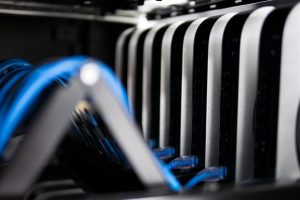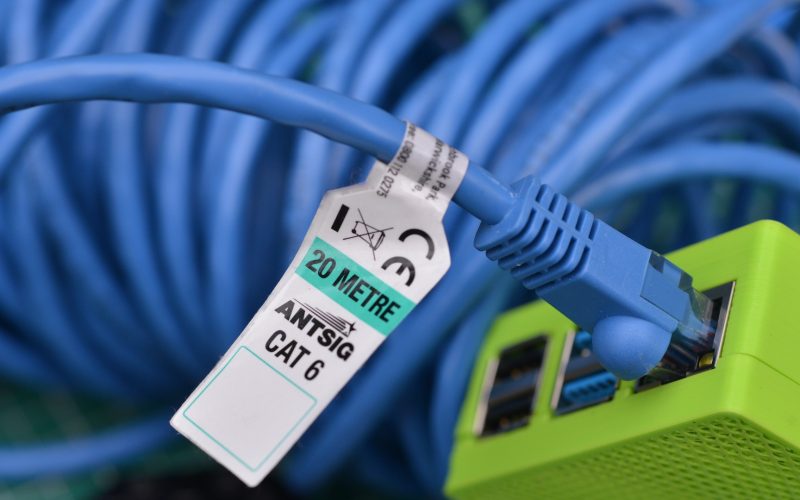Introduction: Ethernet Cable Length
In today’s fast-paced digital world, a robust and efficient network infrastructure is crucial for seamless data flow. Whether it’s for business or personal use, a stable and high-speed internet connection can significantly impact productivity and user experience. Among the various components that contribute to network performance, the length of the Ethernet cable plays a vital role. In this article, we will delve into the significance of Ethernet cable length and how to find the ideal length for maximizing data flow and network performance.
Understanding Ethernet Cable Length and Its Impact on Data Flow:
Ethernet cables are the backbone of most local area networks (LANs) and are used to connect devices such as computers, routers, switches, and other network peripherals. These cables facilitate data transmission using electrical signals, and their length can influence the quality of data flow.
The primary concern related to Ethernet cable length is signal attenuation, where the strength of the signal weakens as it travels through the cable. Longer cables generally experience more signal loss, leading to potential data errors and decreased network performance. While modern Ethernet standards have improved resistance to attenuation, it is still essential to consider the cable length when designing a network.

Factors Influencing Data Transmission in Ethernet Cables:
Several factors come into play when considering the ideal Ethernet cable length for a specific network setup:
- Cable Category: Ethernet cables are available in different categories, such as Cat 5e, Cat 6, Cat 6a, Cat 7, etc. Each category has its characteristics, including maximum length specifications. Understanding the capabilities of different cable categories is crucial for optimizing data transmission.
- Bandwidth Requirements: The amount of data that needs to be transmitted over the network is directly related to the required bandwidth. Higher bandwidth demands may require shorter cable lengths to maintain optimal data flow.
- Environmental Interference: External factors like electromagnetic interference, radio frequency interference, and crosstalk can affect signal integrity. The length of the cable can influence its susceptibility to such interference, emphasizing the need for proper cable management.
Finding the Ideal Ethernet Cable Length for Your Network:
Determining the ideal Ethernet cable length involves striking a balance between signal integrity and data flow. While longer cables may offer convenience in terms of network setup, they can lead to reduced performance. On the other hand, shorter cables may restrict flexibility but can ensure higher data transfer rates.
To find the sweet spot, consider the following steps:
- Network Layout Analysis: Evaluate the physical layout of your network and identify the required cable lengths for connecting various devices. Plan for the most direct and efficient routes to minimize cable length.
- Cable Category Selection: Based on your network’s bandwidth requirements and desired data speeds, choose an appropriate Ethernet cable category. Cat 6 or above is recommended for most modern networks.
- Cable Management: Properly organize and manage cables to avoid clutter and minimize interference. Avoid bending cables excessively or running them alongside power cables to reduce potential signal disruptions.
- Testing and Benchmarking: After setting up your network, conduct regular tests and benchmarks to assess data flow and network performance. If necessary, make adjustments to cable lengths to optimize performance.
Tips for Maximizing Data Flow and Performance:
Apart from choosing the right Ethernet cable length, consider implementing the following tips to further enhance data flow and network performance:
- Keep Cables Updated: Over time, Ethernet cables may degrade or become damaged. Regularly inspect and replace old cables to maintain optimal performance.
- Upgrade Network Equipment: Ensure that your routers, switches, and other network equipment are up to date and capable of handling high data speeds.
- Optimize Network Settings: Fine-tune network settings, such as Quality of Service (QoS) parameters, to prioritize critical data traffic and reduce congestion.
- Consider Fiber Optic Solutions: In situations where longer cable lengths are unavoidable, consider using fiber optic cables, which offer better signal integrity over longer distances.
Conclusion:
The ideal Ethernet cable length is a critical factor in maximizing data flow and network performance. By understanding the impact of cable length on signal integrity and considering various factors influencing data transmission, you can design a network that meets your bandwidth requirements while ensuring optimal data transfer rates. Remember to choose the right Ethernet cable category, implement proper cable management, and regularly test and optimize your network for the best results. With these considerations in mind, you can build a reliable and high-performance network infrastructure that meets the demands of today’s data-driven world.












